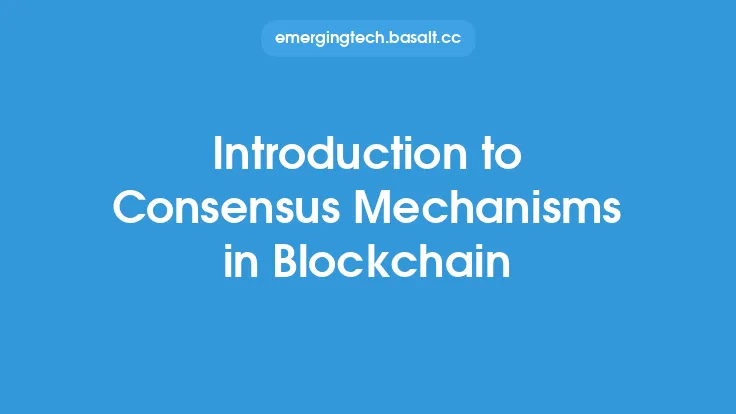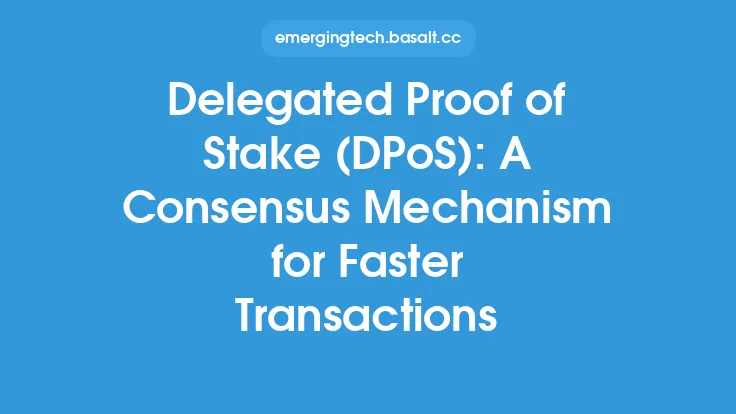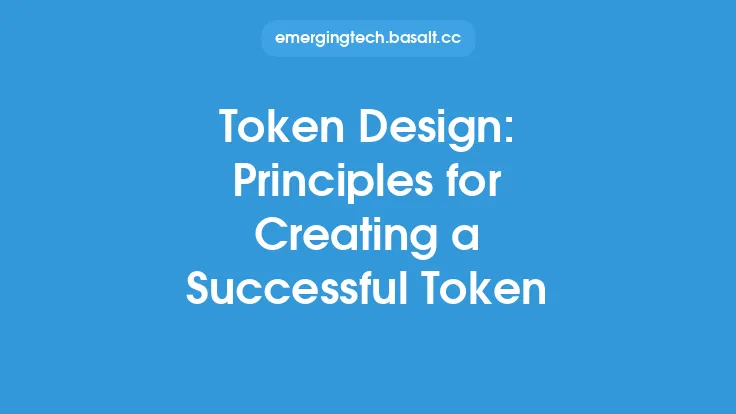When it comes to building a blockchain project, one of the most critical decisions you'll make is choosing the right consensus mechanism. This decision can have far-reaching implications for the security, scalability, and overall performance of your blockchain network. With so many consensus mechanisms to choose from, it's essential to consider several key factors to ensure you select the best one for your project's specific needs.
Understanding Your Project's Requirements
Before selecting a consensus mechanism, it's crucial to have a deep understanding of your project's requirements. This includes considering the type of data that will be stored on the blockchain, the expected transaction volume, and the level of security needed. For example, if your project involves sensitive financial data, you may require a more secure consensus mechanism like Proof of Work (PoW) or Byzantine Fault Tolerance (BFT). On the other hand, if your project involves a high volume of transactions, a faster consensus mechanism like Delegated Proof of Stake (DPoS) may be more suitable.
Network Size and Node Distribution
The size of your network and the distribution of nodes can also play a significant role in determining the best consensus mechanism for your project. For instance, if your network consists of a small number of nodes, a consensus mechanism like Leader-Based Consensus Protocols may be more efficient. However, if your network is large and decentralized, a consensus mechanism like Proof of Stake (PoS) may be more suitable. It's also important to consider the geographic distribution of nodes, as this can impact the latency and communication overhead of the consensus mechanism.
Energy Efficiency and Environmental Impact
In recent years, there has been growing concern about the environmental impact of blockchain networks, particularly those that use energy-intensive consensus mechanisms like PoW. If your project is focused on sustainability, you may want to consider a more energy-efficient consensus mechanism like PoS or DPoS. These mechanisms require significantly less energy to operate, making them a more environmentally friendly option.
Security and Fault Tolerance
Security and fault tolerance are critical considerations when selecting a consensus mechanism. Different consensus mechanisms offer varying levels of security and fault tolerance, so it's essential to choose one that aligns with your project's specific needs. For example, BFT is a highly secure consensus mechanism that can tolerate up to one-third of nodes being faulty or malicious. On the other hand, DPoS is a faster consensus mechanism that offers a lower level of security but is still highly resistant to faults and attacks.
Scalability and Performance
The scalability and performance of your blockchain network are also critical factors to consider when selecting a consensus mechanism. Different consensus mechanisms offer varying levels of scalability and performance, so it's essential to choose one that can handle your project's expected transaction volume. For example, PoW is a highly secure consensus mechanism but can be slow and energy-intensive, making it less suitable for high-transaction-volume applications. On the other hand, DPoS is a faster consensus mechanism that can handle a high volume of transactions, making it more suitable for applications that require fast transaction processing.
Implementation Complexity and Cost
Finally, it's essential to consider the implementation complexity and cost of the consensus mechanism. Different consensus mechanisms require varying levels of expertise and resources to implement, so it's crucial to choose one that aligns with your project's budget and technical capabilities. For example, PoS is a relatively simple consensus mechanism to implement, while BFT is more complex and requires a higher level of expertise.
Conclusion and Future Directions
In conclusion, selecting the right consensus mechanism for your blockchain project is a critical decision that requires careful consideration of several key factors. By understanding your project's requirements, network size and node distribution, energy efficiency and environmental impact, security and fault tolerance, scalability and performance, and implementation complexity and cost, you can make an informed decision that ensures the success and sustainability of your project. As the blockchain landscape continues to evolve, it's likely that new consensus mechanisms will emerge, offering even more options for developers and projects. By staying informed and up-to-date on the latest developments in consensus mechanisms, you can ensure that your project remains competitive and innovative in the ever-changing world of blockchain.





